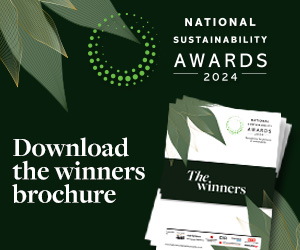The Energy Transitions Commission (ETC) has released two new reports analysing the feasibility of achieving a net-zero greenhouse gas emissions economy by 2050 and the actions required in the next decade to put this target within reach.
The ETC states that achieving a net-zero GHG emissions economy within the next 30 years is technically and economically feasible, with a profound transformation of the global energy system a net-zero GHG economy can be built on abundant, affordable zero-carbon electricity.
Clean electrification will be at the heart of this transformation enabled by the rapidly falling costs of renewable energy, with a complementary role for clean hydrogen technology in sectors that are difficult or impossible to electrify.
The report, Making Clean Electrification Possible: 30 years to electrify the global economy sets out why it is feasible to multiply the size of the global power system, while shifting to renewable-based electricity provision. The parallel report Making the Hydrogen Economy Possible: Accelerating clean hydrogen in an electrified economy sets out the complementary role for clean hydrogen and how a combination of private-sector collaboration and policy support can drive the initial ramp up of clean hydrogen production and use to reach 50 million tonnes by 2030.
Electricity could represent up to 70 per cent of final energy demand by 2050, versus 20 per cent today, with total electricity use expected to grow as much as five times in the coming decades. Transitioning to clean electricity as the main source of final energy represents the cheapest and most efficient way to decarbonise the economy. The rapidly falling costs of renewables and storage solutions make it possible to achieve the required massive expansion of clean power systems at low cost, according to the reports.
However, wind and solar must increase from today’s 10 per cent of total electricity generation to about 40 per cent by 2030, and over 75 per cent by 2050. Annual wind and solar installations must therefore grow by 5-7 times by 2030, and more than 10 times by 2050. They must also be accompanied by the parallel deployment of other zero-carbon generation technologies (like hydro and nuclear), flexibility solutions, storage and power networks to deliver zero-carbon power systems at scale.
The ETC states that this is undoubtedly within reach if clear national strategies for decarbonisation are put in place and appropriate power market design unlocks private financial flows. Investments in renewable power, primarily wind and solar, will represent the vast majority (around 80 per cent) of total investments required to achieve a net-zero economy. Over $80tr of investment will be required globally over the next 30 years, and this includes investment in renewable generation to support both direct and indirect electrification, in addition to investment in electricity grid infrastructure.
Clean hydrogen will play a complementary role to decarbonise sectors where direct electrification is likely to be technologically very challenging or prohibitively expensive, such as in steel production and long-distance shipping. A net-zero GHG emissions economy by mid-century will likely need to use about 500 to 800 million tonnes of clean hydrogen per annum, a 5-7 fold increase compared to hydrogen use today. Green hydrogen, produced via the electrolysis of water, is likely to be the most cost-competitive and therefore the major production route in the long-term, due to falling renewable electricity and electrolyser equipment costs.
“We now have the technologies to completely decarbonise electricity generation at low cost: and electrification is the key to zero carbon production in most of the economy. By mid-century even rich developed countries will need 2-3 times as much electricity as today and developing economies 5-10 times as much. Governments, businesses and investors need to recognise the scale of the new industrial revolution required and the huge opportunities it creates,” said Lord Adair Turner, chair, ETC.
The ETC is a coalition of more than 45 leaders from global energy producers, energy industries, financial institutions and environmental advocates – including ArcelorMittal, Bank of America, BP, Development Research Center of the State Council of China, EBRD, HSBC, Iberdrola, Ørsted, Shell, Longi Solar, Tata Group, Volvo Group and the World Resources
Latest News
-
Premier League and Comic Relief partnership aims to improve children’s mental health
-
Russell Hobbs launches food poverty campaign in schools
-
Tottenham Hotspur and charities launch film to tackle mental health stigma
-
Cardfactory funds homelessness charity’s team of psychologists
-
Bingo firm raises £300,000 for the Stroke Association
-
Sainsbury’s links up with Comic Relief for festive recipe campaign
© 2019 Perspective Publishing Privacy & Cookies







Recent Stories